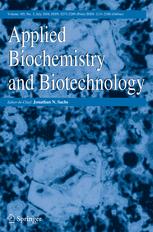Ver ítem
- xmlui.general.dspace_homeCentros Regionales y EEAsCentro Regional Santa FeEEA RafaelaArtículos científicosxmlui.ArtifactBrowser.ItemViewer.trail
- Inicio
- Centros Regionales y EEAs
- Centro Regional Santa Fe
- EEA Rafaela
- Artículos científicos
- Ver ítem
Preparation and characterization of a Staphylococcus aureus capsular polysaccharide-protein conjugate prepared by a low cost technique: a proof-of-concept study
Resumen
Staphylococcus aureus is a worldwide distributed pathogen that produces several diseases in many species and is the major cause of mastitis in dairy cows. S. aureus capsular polysaccharide 5 (CP5) has been widely proposed as a vaccine candidate since it is expressed in a high proportion of isolates from intramammary infections and is able to induce opsonophagocytic antibodies. However, to reach immunological properties, polysaccharides need to be coupled
[ver mas...]
Staphylococcus aureus is a worldwide distributed pathogen that produces several diseases in many species and is the major cause of mastitis in dairy cows. S. aureus capsular polysaccharide 5 (CP5) has been widely proposed as a vaccine candidate since it is expressed in a high proportion of isolates from intramammary infections and is able to induce opsonophagocytic antibodies. However, to reach immunological properties, polysaccharides need to be coupled to carrier proteins. The aim of this study was to evaluate a conjugation method employing p-benzoquinone (PBQ), which was not previously reported for the development of vaccine components. Purified S. aureus CP5 was coupled to human serum albumin (HSA) with high efficiency, reaching a rate PS/protein of 0.5. Mice groups were immunized at days 0, 14, 28, and 42, with the conjugate (CP5-HSAPBQ), free CP5, or PBS, formulated with incomplete Freund adjuvant, and after 3 months, they were challenged with free CP5 to evaluate the memory response. IgG and IgM isotypes were measured on serum samples all along the experiment, and IgG subclasses were determined to analyze the humoral profile. In contrast to the response obtained with free CP5, CP5-HSAPBQ induced IgG titers of 1/238,900 after three doses and a memory response was observed after the challenge. Results indicate that immunization with CP5-HSAPBQ effectively induce a T-dependent immune response against CP5. Moreover, besides IgG2a was the main subtype obtained, the joint production of specific IgG1, IgG2b, and IgG3 types indicated a balanced humoral response. As p-benzoquinone conjugation of CPs to proteins is far less expensive and straightforward than other methods commonly used in vaccine preparations, the robust humoral response obtained using this method points out that this can be an interesting alternative to prepare S. aureus CP5 conjugate vaccines.
[Cerrar]

Autor
Pujato, Nazarena;
Díaz, Germán;
Barbagelata, Maria Sol;
Vicco, Miguel Hernán;
Calvinho, Luis Fernando;
Marcipar, Ivan Sergio;
Fuente
Applied Biochemistry and Biotechnology 175 (1) : 141–154 (January 2015)
Fecha
2015-01
ISSN
0273-2289
1559-0291
1559-0291
Formato
pdf
Tipo de documento
artículo
Palabras Claves
Derechos de acceso
Restringido
 Excepto donde se diga explicitamente, este item se publica bajo la siguiente descripción: Creative Commons Attribution-NonCommercial-ShareAlike 2.5 Unported (CC BY-NC-SA 2.5)
Excepto donde se diga explicitamente, este item se publica bajo la siguiente descripción: Creative Commons Attribution-NonCommercial-ShareAlike 2.5 Unported (CC BY-NC-SA 2.5)

